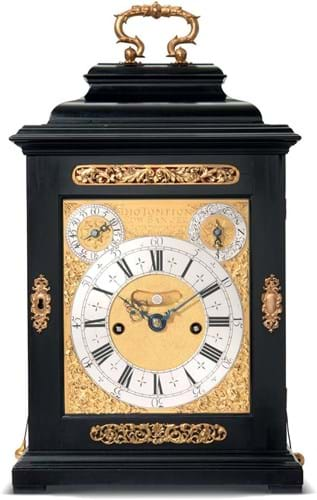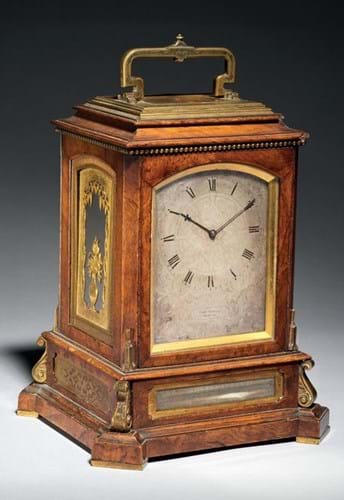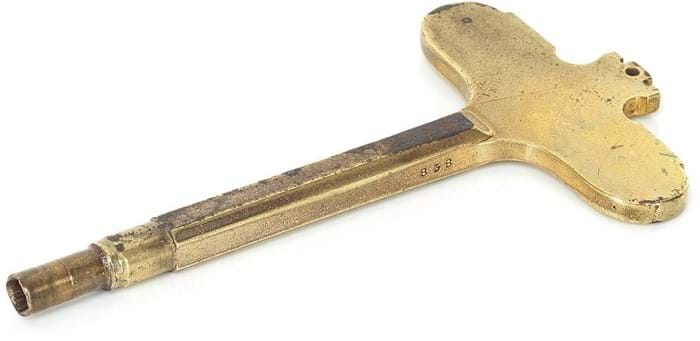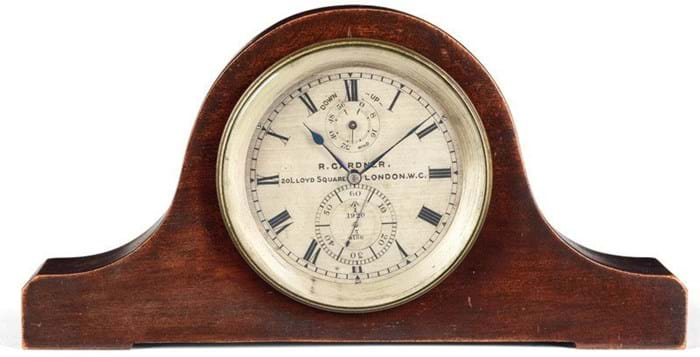
Queen Anne ormolu and ebony striking table clock with pull quarter repeat by Thomas Tompion and Edward Banger, £155,000 at Christie’s.
Recent auctions offered a good range of clocks including high-value examples from the top tier of the market.
The general trend of buyers wanting the most horologically interesting clocks rather than settling for the more average pieces appears to be continuing.
As Cotswolds clock dealer Tobias Birch observes: “Overall, the antique clock market is steady. Buyers are there and are looking, but they have refined taste. They can be choosy and will wait for the right clock. Quality is key.
“I am seeing clients wanting to buy fine English pre-1700 table clocks, as well as precision timepieces such as regulators or chronometers.”
Commenting on Bonhams’ (28% buyer’s premium) Fine Clocks sale on July 13, specialist James Stratton concurred.
“It’s a solid market. We had a record number of registrations to bid, at least 15% up from last year. Of the top 10 items sold it was 50/50 between private buyers and the trade.
“Freshness to market is important, along with rarity, quality, condition, originality, size, proportions, and provenance. Even with clocks by important makers, if they don’t tick enough of these boxes there is no guarantee they will sell.”
Tompion and Banger
The response to the Golden Age clocks offered at auction this season was muted.
The one six-figure sale was at Christie’s (26% buyer’s premium) Exceptional Sale on July 6. A Queen Anne ormolu and ebony striking table clock with pull quarter repeat was signed for Thomas Tompion and Edward Banger and numbered 427 for c.1705.
Tompion formed a partnership with his former apprentice and son-in-law Edward Banger (d.c.1720) at the beginning of the 18th century that for reasons unknown ended abruptly in c.1708.
As classified by Jeremy Evans, Tompion table clocks between c.1697-1713 typically feature ‘phase three’ style cases. Estimated at £180,000-200,000, the clock fell short of the lower estimate but still sold on the day for £155,000.
By way of a useful comparison, Christie’s recently sold another rare Tompion/Banger table clock, No 444, from c.1705, in May 2022. This clock from the Sir Nicholas Goodison sale also has a ‘phase 3’ ebony veneered case. It made £145,000 with an estimate of £150,000-250,000.
Travel companions
For collectors looking for a highquality English travelling clock, Bonhams’ July 13 sale provided an excellent example.

A 19th century English gilt-brass and walnut giant striking travelling clock with thermometer attributed to Thomas Cole, £25,000 at Bonhams.
The mid-19th century gilt-brass mounted walnut giant striking travelling clock, with thermometer, was attributed to well-known maker Thomas Cole, London, and retailed by Thomas Boxell, Brighton.
Bonhams also noted the clock was on the market for the first time and had once been almost certainly purchased by Anne Hay-Mackenzie, Duchess of Sutherland and 1st Countess of Cromartie (1829-88).

The original key to a 19th century English gilt-brass and walnut giant striking travelling clock with thermometer attributed to Thomas Cole.
Later inherited by Roderick Blunt- Mackenzie, 4th Earl of Cromartie, accordingly the clock sat on his library desk and he was the only one allowed to wind it. The clock, retaining its original winding key numbered 838, got away very nicely at £25,000 against an estimate of £7000-10,000.

A 19th century two-day marine chronometer movement used in Shackleton’s Nimrod expedition, £11,000 at Bonhams.
Adding historical interest to this auction was a very rare late 19th century two-day marine chronometer movement used in Ernest Shackleton’s British Antarctic Expedition from 1907-09. The expedition came to within 97 miles of the magnetic pole before being forced to turn back due to bad weather.
Now mounted in a later mahogany mantel case the chronometer was one of several used aboard the Nimrod. Signed on the dial R.
Gardner, 20 Lloyd Square, London W.C., it was originally purchased by the Admiralty in March 1899 for the sum of £44 (copies of the ledger of Receipts and Issues of Chronometers were included with the lot).
A clock with obvious crossover collecting interest to Heroic Age Polar material, it was estimated at £3000-5000 but sold at £11,000.













